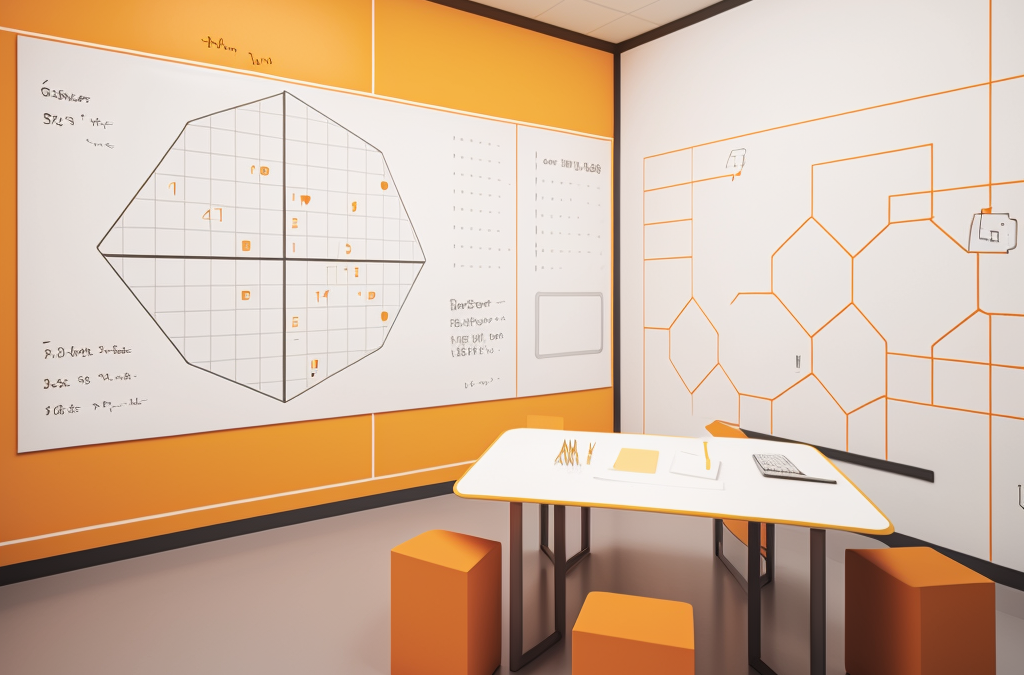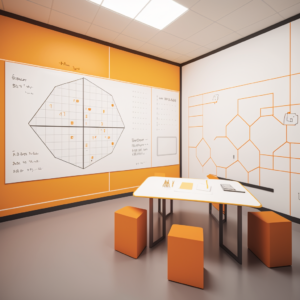Revolutionizing STEM Education: Dry Erase Paint in Science Laboratories
In the dynamic realm of STEM (Science, Technology, Engineering, and Mathematics) education, innovation is the driving force that propels students and researchers towards excellence. Among the many tools that have redefined the learning landscape, dry erase paint stands out as a transformative addition to science laboratories. With the power to turn ordinary walls into interactive canvases, dry erase paint is revolutionizing how experiments are visualized, data is recorded, and collaboration thrives in these critical educational spaces.
Unlocking Creativity and Collaboration
Traditionally, the rigid separation between workspace and the learning environment often hindered creativity in science laboratories. However, the introduction of dry erase paint has eliminated these barriers. By coating laboratory surfaces with this innovative paint, educators have created writable spaces where students and researchers can ideate, annotate, and collaborate with ease. Whether it’s illustrating complex electrical circuits in a physics class or mapping out intricate ecosystems in a biology lab, these interactive surfaces foster collaboration, encourage creative problem-solving, and stimulate a deeper understanding of scientific principles.
From Observation to Visualization
Central to the scientific method is the act of observation—closely studying phenomena, recording data, and drawing conclusions. In science laboratories, this process is greatly enhanced by the integration of dry erase painted walls. Here, observation transcends passivity; it becomes an active, visual endeavor. Students and researchers can directly sketch out observations, hypotheses, and experimental setups, providing a tangible and vivid record of their scientific journey.
For instance, in a chemistry laboratory, dry erase painted walls can serve as virtual whiteboards for chemical equations and molecular structures. During a biology experiment, students can plot the growth of microorganisms in real-time, instantly visualizing data trends. This shift from paper-based note-taking to dynamic wall notation not only streamlines the scientific process but also elevates engagement. Complex concepts are deconstructed into comprehensible visual representations, making STEM education more accessible and exciting for learners.
Enhancing STEM Education with Dry Erase Paint: Real-world Applications
Let’s explore real-world examples of how STEM educators are harnessing the power of dry erase paint to transform their laboratories and enhance the learning experience for students.
- The Chemistry Catalyst: In a high school chemistry lab, dry erase painted walls have revolutionized the way chemical reactions are documented. Instead of traditional lab notebooks, students work together to diagram experiments, note observations, and record data directly on the lab’s writable walls. This not only reinforces their understanding of chemical processes but also encourages collaborative learning.
- Physics in Motion: At a university physics lab, dry erase painted walls serve as dynamic problem-solving spaces. When tackling complex physics equations or designing experiments, students can visualize and discuss their ideas directly on the walls. This interactive approach fosters peer-to-peer teaching and allows for a deeper exploration of physical phenomena.
- Biology Beyond Textbooks: In a biology research facility, dry erase painted walls enable researchers to map out genetic sequences, sketch biological pathways, and brainstorm innovative experiments. This visual thinking space promotes creativity and accelerates the pace of discovery in the field of life sciences.
- Engineering Excellence: In an engineering school’s laboratory, dry erase painted walls aid in the collaborative design process. Engineering students can draft schematic diagrams, work on group projects, and annotate CAD drawings directly on the lab’s walls. This immersive learning environment mirrors real-world engineering scenarios and enhances their problem-solving skills.
- Mathematics Made Visual: In a mathematics department, dry erase painted walls have become indispensable for illustrating complex mathematical concepts. Professors can conduct real-time problem-solving sessions during lectures, and students can work out equations together, turning the classroom into an interactive mathematical playground.
Practical Considerations and Implementation
Implementing dry erase paint in science laboratories involves careful planning and consideration of practical aspects. Proper wall preparation is essential to ensure optimal performance. The surfaces should be clean, smooth, and free of defects before applying the dry erase paint. High-quality dry erase markers, resistant to smudging and easy to erase, should be provided to users. Regular maintenance, including cleaning to prevent ghosting or staining, is imperative. There are specialized cleaning solutions designed for dry erase surfaces that should be used.
Inspiring Future Innovators
The impact of dry erase paint in science laboratories reaches far beyond the confines of educational institutions. It extends to inspiring the future generation of scientists, engineers, and innovators. Young minds are exposed to the limitless possibilities of STEM fields as they witness equations, diagrams, and colorful annotations covering the walls. These immersive experiences spark their interest in science and instill the belief that they too can become contributors to the world of STEM. Dry erase paint, by creating dynamic and engaging learning environments, serves as a catalyst for nurturing the next generation of scientists and innovators.
Sustainable and Cost-effective Learning Spaces
Dry erase paint also offers practical advantages in terms of sustainability and cost-effectiveness. Traditional teaching tools generate significant waste over time. Dry erase painted walls provide a reusable and eco-friendly alternative. Students and researchers can erase and revise their work, reducing the consumption of paper and other disposable materials. This not only promotes eco-conscious practices but also saves educational institutions money in the long run.
Moreover, the versatility of dry erase painted walls extends the lifespan of laboratory spaces. Instead of frequent renovations and equipment upgrades, institutions can maintain existing spaces by renewing the dry erase paint. This cost-effective approach ensures that STEM laboratories remain equipped with state-of-the-art interactive learning environments for years to come.
Expanding the Horizon of STEM
Dry erase paint isn’t just limited to classroom walls; it extends its influence to collaborative research spaces and innovation hubs. Consider a university research center where scientists and researchers from various disciplines converge to tackle complex challenges. Traditional meeting rooms and whiteboards have given way to dynamic collaboration spaces adorned with dry erase painted walls.
These walls become canvases for brainstorming sessions, project planning, and idea sharing. Researchers can diagram experiments, jot down equations, and illustrate concepts freely, fostering interdisciplinary cooperation. The fluidity of dry erase walls encourages cross-pollination of ideas, leading to innovative solutions to pressing scientific problems.
Realizing the Potential in Remote Learning
The COVID-19 pandemic has accelerated the adoption of remote and hybrid learning models in STEM education. Dry erase painted walls have emerged as essential tools for engaging remote learners. Educators can conduct virtual classes or workshops from their own dry erase painted home offices or studios.
These sessions are more interactive and engaging as instructors can visually illustrate complex topics in real-time. Students at home can follow along, annotate on their own dry erase surfaces, and actively participate in discussions. This bridging of physical and virtual learning spaces ensures that STEM education remains accessible and effective, even in challenging times.
Empowering Self-directed Learning
In the era of self-directed learning and online resources, dry erase paint empowers students to take control of their education. Whether in a classroom or at home, students can use dry erase painted surfaces to create their mini-learning environments.
Imagine a student studying chemistry who converts an entire wall into a periodic table, complete with annotations and color-coded trends. Or a physics enthusiast who transforms their room into a whiteboard-covered laboratory for solving problems and experimenting with formulas. Dry erase paint not only encourages active learning but also nurtures a sense of ownership over one’s educational journey.
Conclusion
Dry erase paint has ushered in a new era for STEM education, transcending traditional teaching methods and empowering students and researchers to interact, collaborate, and innovate. Its impact extends from inspiring future scientists to creating sustainable and cost-effective learning spaces. As the educational landscape continues to evolve, dry erase wall paint remains a symbol of innovation and adaptability, equipping STEM learners with the tools they need to excel in a rapidly changing world. The walls of science laboratories are no longer barriers; they are gateways to exploration, knowledge, and limitless possibilities.



Recent Comments